Coogee Media
HISTORY | STORIES | BEYOND BLOG & CREATE PEOPLE |
Bondi's Mermaids & Sculptor Lyall Randolph Williams
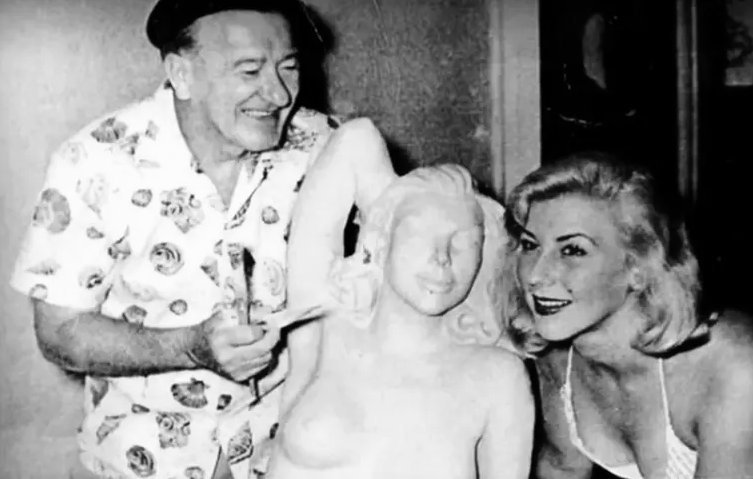 Sculptor Lyall Randolph with Lynette Whillier and mermaid statue
In Search of Lyall Randolph According to a family tree on Ancestry.com Lyall Randolph Williams was born on the 21 September 1901 at the Sydney suburb of Petersham, New South Wales. This is confirmed by the NSW Births, Deaths & Marriages online index, which shows he was the son of Harold and Annie (nee Goodall) Williams of Petersham, the eldest of five children. He grew up in the Bondi area, however, where he had many family connections. Lyall apparently was an accomplished ice skater in his earlier years. The Referee newspaper noted in 1939, that one could buy a copy of a book he wrote called Art of Ice Skating for two shillings from Swains Limited bookshop in Pitt Street Sydney (although a copy never made it to the shelves of the National Library of Australia). He became a devotee of the renowned Australian ice skater Pat Gregory, but there is no indication of whether he had any personal associations with her.
Penniless Art Student By 1930, he was studying sculpture at the East Sydney Technical College (now the National Art School). With the effects of the Depression biting hard, he had so little money that he needed to walk to and from his classes at the College each day from Glebe (a considerable walking distance) where he had moored a large boat that he had built and shared with a friend as accommodation. For one of his class projects Lyall created a small sculpture of the body of a nude woman Australian Rhythm However, he was so poor, that he could not afford to have the clay fired and had to keep it "wet" for six weeks.
Builds Successful Business In those early days he saw the Australian Rhythm sculpture piece, which he painted a golden bronze, as something of a personal artistic motif. The golden female nude was a theme that he would return to several times over this career. 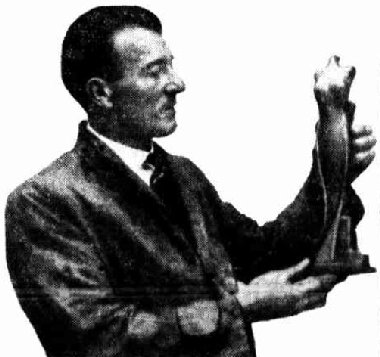 Lyall Randolph Williams with his sculpture "Australian Rhythm", 1930 There is little that can be found of Lyall during the 1940s. Too young for World War One, and too old for World War Two service, he does not appear on any of the Australian War Memorial databases. But he did enter the Art Gallery of New South Wales Wynne Prize for Sculpture in 1942 and was displayed as one of the finalists with his bust of General Douglas Macarthur.
Self-Promoter Lyall became a father at some stage. According to the family history of the Williams', he had one daughter, Annie, who was adopted by his sister, Jean Hilda Ivy Williams and her husband Leslie Oliver Warner. She later became Annie Lotoki, who had a career as a theatre and arts administor on Queensland's Gold Coast. 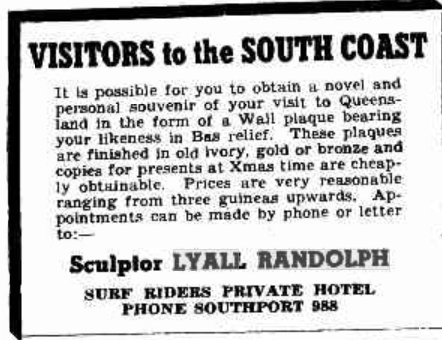 1954 notice from Lyall Randolph advertising the sale of personalised bas-relief images So it was that by the early 1950s, Lyall was living in Brisbane. One project he had on the boil involved creating a bust of Sister Elizabeth Kenny (1880 - 1952) a self-trained Australian bush nurse who developed an approach to treating polio symptoms in children. He offered the bust to Toowoomba City Council for free. There followed a series of newspaper articles about the long and tortuous journey of the bust from "his studio" to Toowoomba on bumpy roads with misplaced road signs which resulted in damage to the bust. It eventually made it to Toowoomba and for a time at least was on display at the Toowoomba Regional Art Gallery. Among the published letters he wrote to newspaper editors was one in 1954 campaigning for a bust of the Aboriginal man Yirra-ka-la and his wife Bedooree of Broadbeach, Queensland. It has been said about him that he was also an inventor. One invention was a type of pillow, designed for infants, which pumped air through it to simulate sounds a child would hear in the in the womb and thus encourage the child to relax and go to sleep. The National Archives of Australia also has a record of him lodging a copyright application in April 1957 for a musical Wann Kommen Sie, (German for "When are they coming?").
Bankruptcy Despite this setback, in 1958 he looks like he was back on his feet. He created a bust of the then Prime Minister, Robert Menzies which garnered quite a lot of publicity. The left-wing Communist Party of Australia run newspaper the Tribune said that he would try and sell this bust in London. They noted, tartly, that "Seems to us it would be more fitting to mould his mellon in "pig-iron," and send it to Kishi in Tokyo". The following year his bust of the acclaimed Australian writer and journalist Dame Mary Gilmore (1865 - 1962), was exhibited at Parramatta's Art Society's 1959 autumn exhibition. That same year at the Parramatta Youth Centre at 100 Macquarie Street, Parramatta, Lyall was appointed as the Director of a school of sculpture and pottery, aimed at encouraging the artistic endeavours of Parramatta's youth. This was one of a number of times he tried his hand at teaching art. 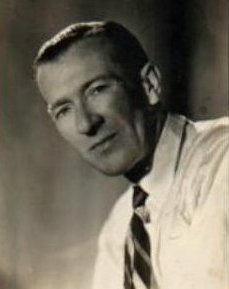 Lyall Randolph Williams
Bondi Mermaids Conceived
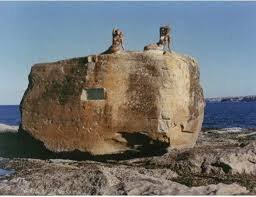
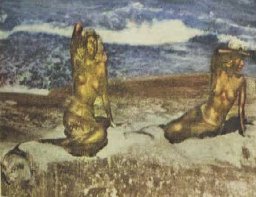 Bondi's Golden Mermaids Lyall pitched the idea of the mermaid sculpture to Waverley Council, at his own expense, but the Council refused to accept them on any land it controlled. Lyall wound his way through the State Government bureaucracy trying to find something resembling permission. He had the mermaids installed on Big Rock at Ben Buckler, on the northern shore of Bondi because, he claimed, they were placed a certain distance offshore the space they occupied was not under the jurisdiction of Waverley Council, but the Department of Lands. He also claimed that the Department of Lands had approved the statues. He was in very murky bureaucratic waters, so to speak.
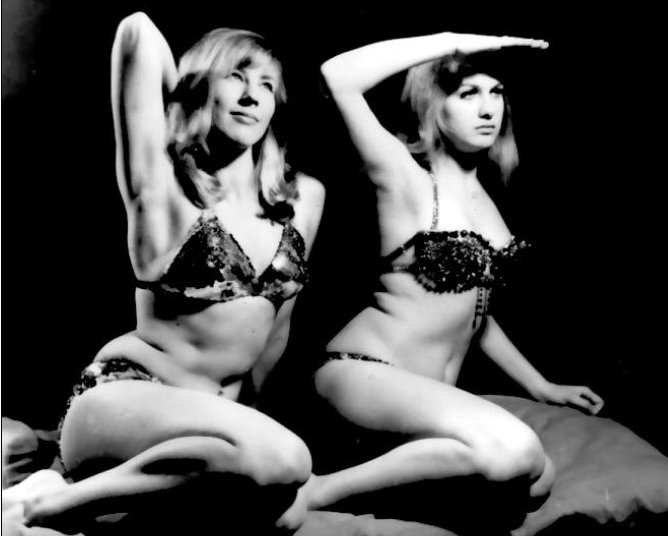 Lynette Whillier & Jan Carmody pose for Mermaid Sculpture A mere month after they were installed Mermaid Jan was chiselled from the rock by university students as part of a Commemoration Day prank. She was later recovered from the Engineering School, Sydney University. Repaired, she was restored to the Big Rock to rejoin her fellow mermaid Lynette. The cost of the repair was met by public subscription. Heavy seas claimed Lynette in 1974, swept of the Big Rock in a storm she disappeared forever. Jan lost an arm and her tail in the same storm. Two years later, Waverley Council removed what was left of her in 1976, and stored her in a Council depot where she was forgotten for many years.
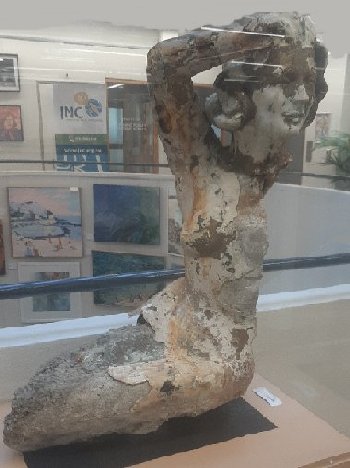 What remains of Mermaid Jan in a glass case at Waverley Library In the late 1980s she was moved to Waverley Library, where, in 1989, the Friends of Waverley Library paid for her remains to be preserved. Jan the mermaid remains on public display at Waverley Library today, held safe in her Perspex box.
Three Sisters Fountain Sculpture, Katoomba 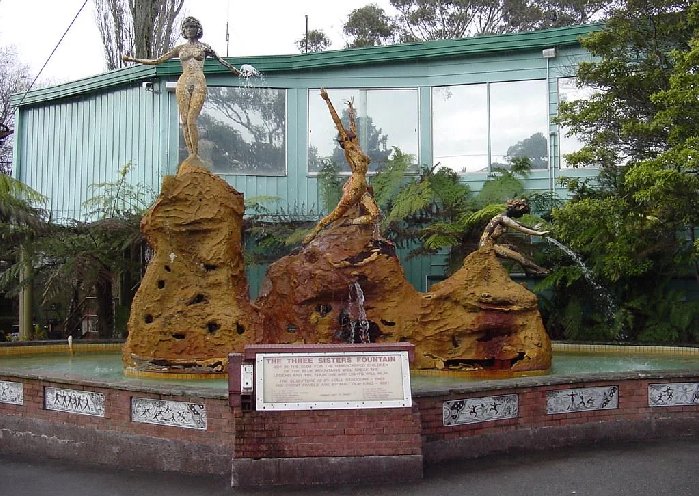 Three Sisters Fountain at Katoomba
Death Lyall Randolph Williams craved fame as a noted artist and sculptor, although at times it may have seemed to have been a mixture of being a minor celebrity or notoriety. But over the decades, memories of his fiberglass and cement mermaids have lingered and grown in the public's perception, ensuring Lyall achieved, in the afterlife, something of the renown he sought in life. References
Note 1 George Rayner Hoff (27 November 1894 - 19 November 1937) was British-born and became one of the most renowned Australian sculptors and modernist artists. He fought in World War I and is chiefly known for his war memorial work,
particularly the sculptures on the Anzac War Memorial in Hyde Park, Sydney. The General Motors-Holden logo is derived from the original design Hoff executed in 1928.
© Copyright, CoogeeMedia All rights reserved
|